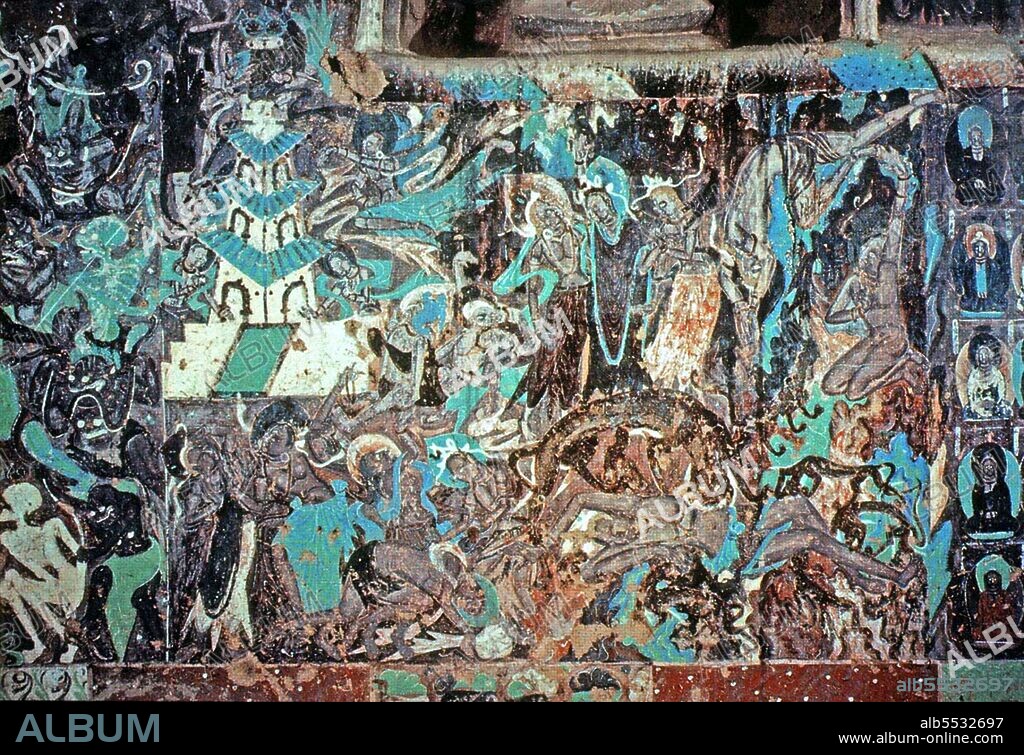alb5532697
China: Mahasattva jataka fresco, south wall, Cave 254 (Northern Wei 439-534 CE), Mogao Caves, Dunhuang, Gansu

|
Zu einem anderen Lightbox hinzufügen |
|
Zu einem anderen Lightbox hinzufügen |



Haben Sie bereits ein Konto? Anmelden
Sie haben kein Konto? Registrieren
Dieses Bild kaufen

Titel:
China: Mahasattva jataka fresco, south wall, Cave 254 (Northern Wei 439-534 CE), Mogao Caves, Dunhuang, Gansu
Untertitel:
Siehe automatische Übersetzung
The Mahasattva jataka fresco illustrates Prince Sattva offering himself to a starving tigress and her cubs. The jataka starts from the top centre with Prince Sattva and his two brothers looking down at the tigress and her seven cubs. The story continues on the right. The prince kneels and pierces his neck with a bamboo stick, and then dives with an outstretched left arm from the cliff to feed the tigress. Then his remains are found by his saddened family. The Mogao Caves, or Mogao Grottoes (Chinese: mògao ku, also known as the Caves of the Thousand Buddhas and Dunhuang Caves) form a system of 492 temples 25 km (15.5 miles) southeast of the center of Dunhuang, an oasis strategically located at a religious and cultural crossroads on the Silk Road, in Gansu province, China. The caves contain some of the finest examples of Buddhist art spanning a period of 1,000 years. The first caves were dug out in 366 AD as places of Buddhist meditation and worship. The Mogao Caves are the best known of the Chinese Buddhist grottoes and, along with Longmen Grottoes and Yungang Grottoes, are one of the three famous ancient sculptural sites of China. The caves also have celebrated wall paintings.
Bildnachweis:
Album / Pictures From History/Universal Images Group
Freigaben (Releases):
Model: Nein - Eigentum: Nein
Rechtefragen?
Rechtefragen?
Bildgröße:
5000 x 3429 px | 49.1 MB
Druckgröße:
42.3 x 29.0 cm | 16.7 x 11.4 in (300 dpi)
Schlüsselwörter:
ASIEN • ASIEN, KONTINENT • BUDDHISMUS • BUDDHISTISCH • CHINESIN • CHINESISCH • GEMAELDE • GESCHICHTE • KONTINENT, ASIEN • KUNST • MALEREI • RELIGION • ZEITGESCHICHTE
 Pinterest
Pinterest Twitter
Twitter Facebook
Facebook Link kopieren
Link kopieren Email
Email
